Don't wanna be here? Send us removal request.
Text

shrimps and cigs at thee bus stop. that's what's up
7K notes
·
View notes
Text
this messed up vintage cat sewing pattern has tormented me since i saw it & like some other folks have done in that post - i tried my hand at tweaking the pattern to resemble the illustration (and my personal tastes) a little more. i've ended up with this, which i have only tested at a small scale and not this final version exactly (where i have done such things as further widening the cheeks and finalizing the leg shapes.) i bestow it upon you nice folks now 👐

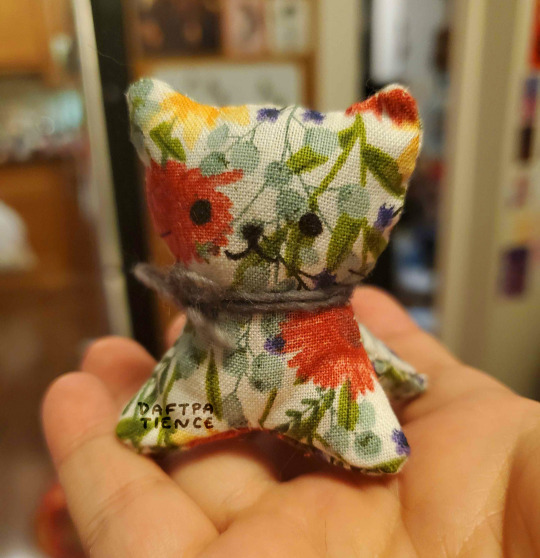
go forth and make weird little beanbag kittens! pls show me if you do!
43K notes
·
View notes
Text


"so there's a divine form of truth that can't be grasped..."
"oh, like the truth that can be felt?"
"yeah, but this one is the shape of the vessel's emptiness rather than the water within."
"wait, but that's sick, because you can find meaning in stillness and silence."
"exactly."
14K notes
·
View notes
Text
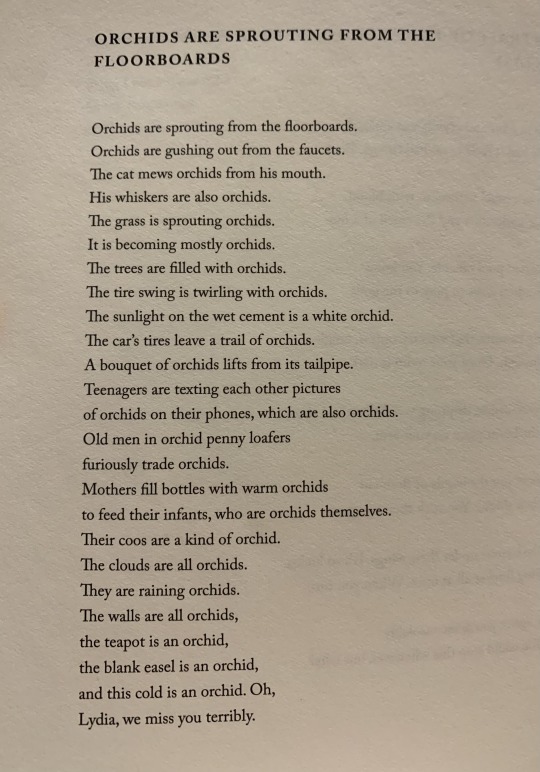
“Orchids Are Sprouting From the Floorboards” by Kaveh Akbar
160 notes
·
View notes
Text

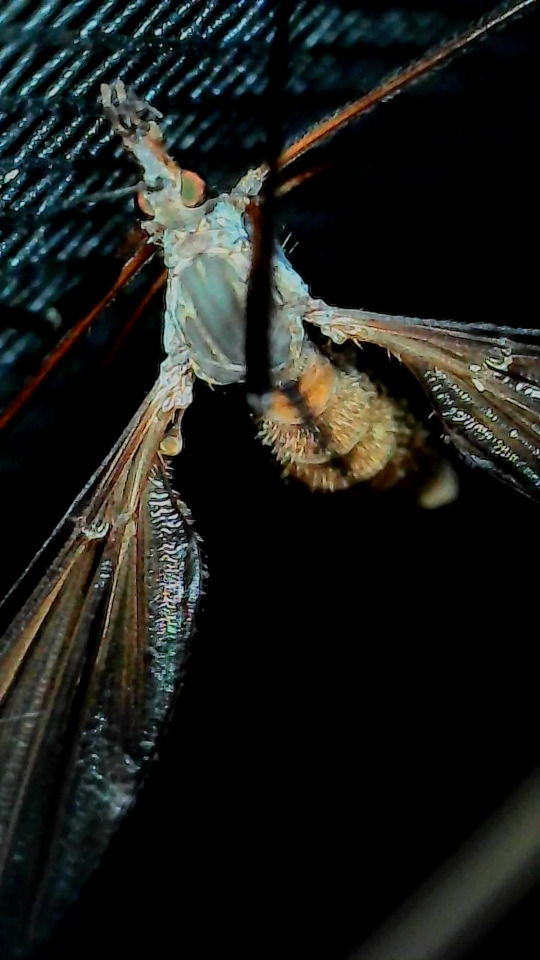




Check out these delightful dipterans! Though they may seem scary, these 2 winged, 6 legged, "bug-eyed" insects are all harmless! House flies, crane flies, and midges are all non-biting insects! Safe to hold, give it a try.
#diptera#insects#i like them#the midge reminds me a lot of the 'mosquitoes' ive been seeing lately#i need to do a little reading and see if i can figure out which im actually spotting.....
30 notes
·
View notes
Photo

Silhouettes on a boat’s rigging at Mystic Seaport, Connecticut
National Geographic | August 1968
3K notes
·
View notes
Text
you need to develop obsessions with strange niche content
10K notes
·
View notes
Text



throwback to this anime that had some of the most bizarre dialogue ive ever seen
981 notes
·
View notes
Note
Upsizing clothes! There are a million upcycling tutorials for clothes that are too big, but so few on how to make too small clothes you still love bigger!
Thank you for your suggestion! We all go through weight fluctuations in life, so it stands to reason our clothes should be able to fluctuate with us.
Resizing your clothes used to be a very common practice before the advent of fast fashion. Fast fashion sizing is extremely flawed, especially when it comes to plus size fashion, and we're stuck with a lot of vanity sizing, so it's a good skill to have regardless of whether you're looking to mend something old or buy something new.
How to upsize clothes:
Introduction:
There are many different ways to make a garment larger. The following list is not exhaustive, just a few ideas to get you started.
Grading patterns:
If you're making your own clothes, it's always useful to know how to modify a sewing pattern. The easiest way to adjust a pre-existing pattern to your size is slash and spread grading. First, you need to define which spots on the pattern need extra space. You then cut your pattern in that spot, and slide the resulting pattern pieces away from each other until you've got the size you need. Use paper to fill in the gaps. To ensure the resulting pattern makes for well-fitting clothes, make a mock-up and add, move, or remove darts where necessary to adapt it to your body type.
The image below shows potential slashing lines on pattern blocks for an AFAB body. Unfortunately this was the only diagram I could find, but know that other types of patterns use similar line placements. Each line is a spot that allows you to add extra space. To read more about this process, check out the corresponding article by Threads Magazine.
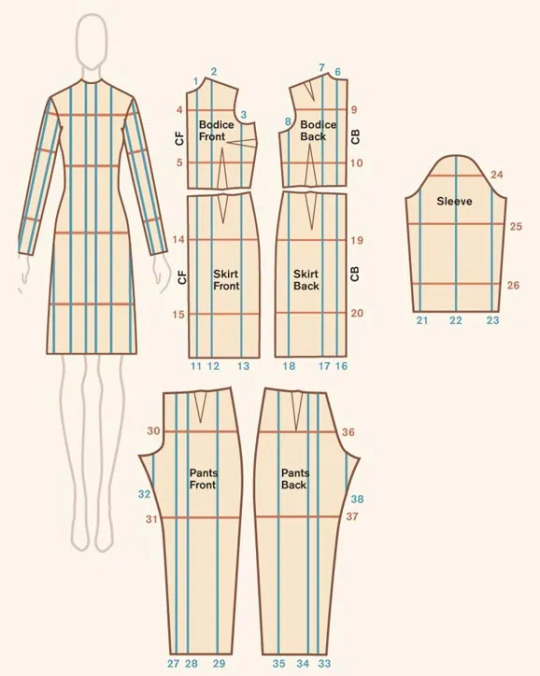
(Image source)
To make your clothes easier to let out in the future, make sure to provide ample seam allowance when cutting out your pattern pieces. This surplus fabric has several different uses, including giving you some wiggle room for when you need to size up your garment.
Now, let's take a look at pre-made garments.
Lengthening clothes:
A garment that's too short on you is easy to modify. Just add more material!
If it's a skirt or a dress, add ruffles to the bottom. Ruffles are easy to make by hand or with a sewing machine. You could also add lace, or wear the item with an underskirt.
For pants, let down your hem or sew on a new cuff. If this isn't enough, maybe consider turning your trousers into capri pants or shorts.
As for shirts, sewing an extra layer to the bottom edge is the easiest way to go, too. You could even combine two shirts into one to get an extra long shirt.
Another option is to cut your item in two and insert extra fabric between your separated garment parts.
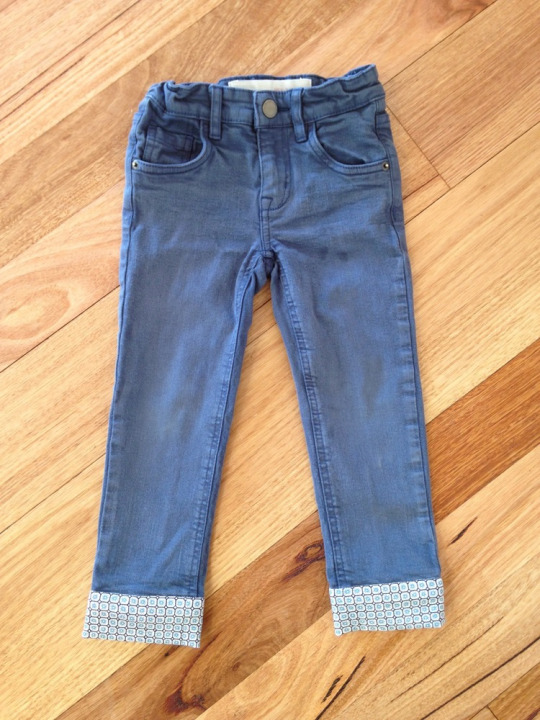
(Image source)
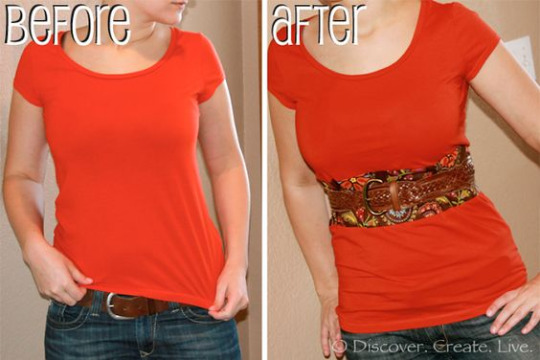
(Image source)
Letting out seams/darts:
Remember how we made sure to have ample seam allowance earlier? When a garment has surplus fabric in the seams and you only need a little extra space, you can undo the seams of your garment and sew them back together again, this time with a smaller seam allowance than before. The Spruce Crafts has a pretty good tutorial on how to let out seams. You won't be able to make major size changes using this technique, but if you only need a few centimetres, this is a good way to go.
A lot of garments also have darts. Darts are fabric folds that are sewn down in strategic places to help the fabric follow the body's curves. If a dart doesn't fit you the way you want it to, then unpick the dart and try on the garment. Either leave the dart open, or pin the dart in place however you want it, then take off the garment again and sew the dart back together.
Be careful not to rip the fabric when using a seam ripper. Also note that removing entire darts may change the garment's fit.
You can also add custom darts to achieve a better fit, but that's a topic for another time.
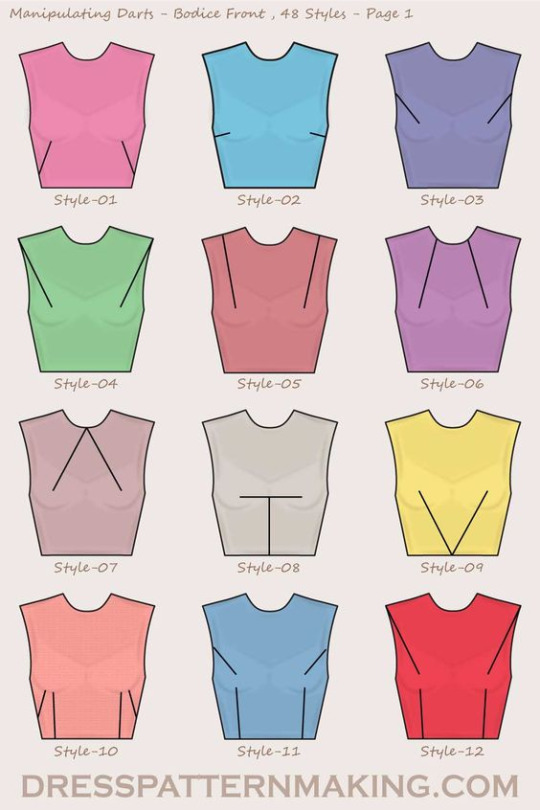
(Image source)
Adding extra fabric to your garment:
If we need to add more room than seam allowance or darts can provide us with, we need to add extra material. Remember those slashing lines we looked at earlier? If you're working with a pre-existing garment rather than a pattern, those are the perfect places to chop up your clothes and add in extra fabric.
Check your sewing stash for fabric that's similar in weight and material to your original garment, or go thrift shopping for an item you could use to upsize your garment. Long skirts and maxi dresses are a great source of fabric for alterations like these!
Lace inserts are also a fun choice to add some room, and if you're working with a knit item, you could even knit or crochet your own custom insert.
Define the area where you want to add extra fabric on your item, and measure how much you need. Draw a straight line on your garment with chalk/soap. Make sure the line doesn't cross any important structural or functional parts of your garment like darts or button holes: refer to the slashing diagram we saw earlier if you're not sure what spot to pick. Cut the line open (or unpick the seam if it's situated on a seam), and add in your extra fabric. Finish off your new seams so they don't unravel later on, and you're done!
You can add straight strips of fabric for extra width or length, or you could use flared panels or even godets to make your item flair out.
Want to see this technique in action? Check out this video by Break n Remake:
youtube
Some ideas:
This Pinterest user cut a straight line down the front of a t-shirt and inserted a lace panel to add extra width in the front of the garment.
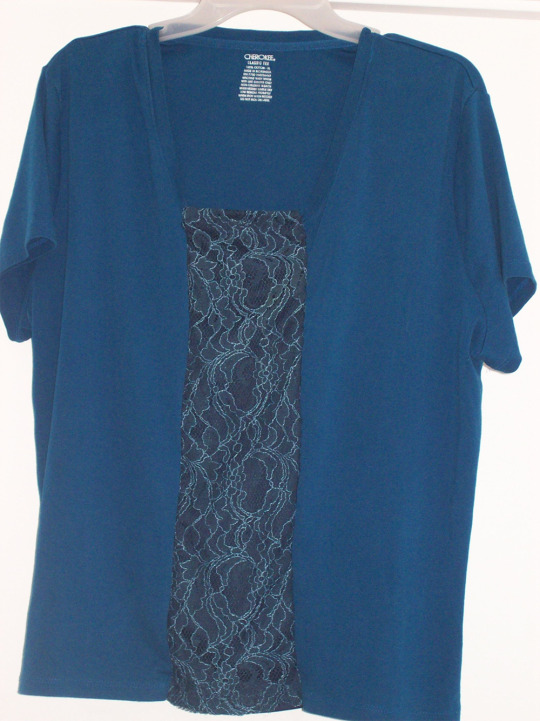
(Image source)
Busy Geemaw cut open the side seams of a shirt and used flared panels to add some extra width in the bust and hip area.
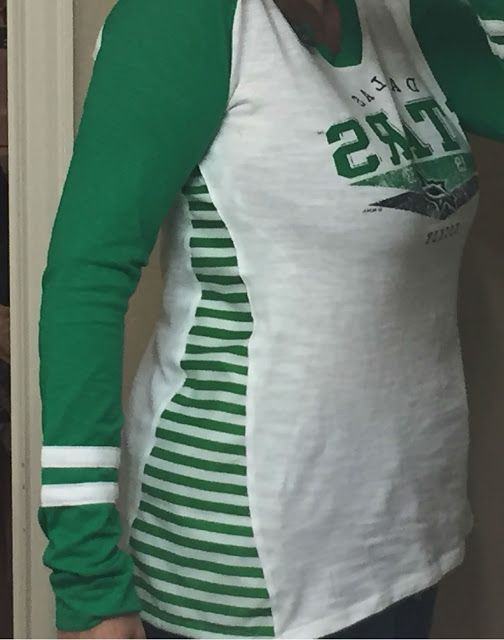
(Image source)
This person added a panel to the sides of a pair of jeans to give them more space in the hip area. You could easily use a long straight panel or a panel that flares at the bottom to resize the entire garment instead of just the hips, or use a wide piece of elastic for extra stretch.
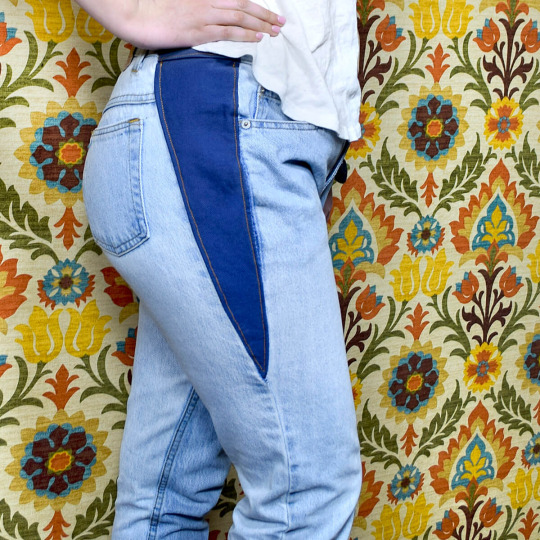
(Image source)
This person added a godet in the back of their shirt in order to get more space in the back.
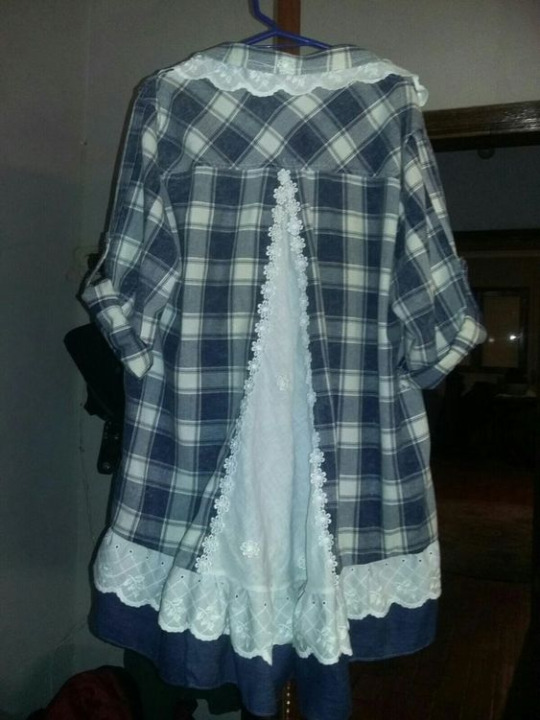
(Image source)
Blue Corduroy enlarged a pair of shorts by opening up the side seams and adding in strips of fabric.
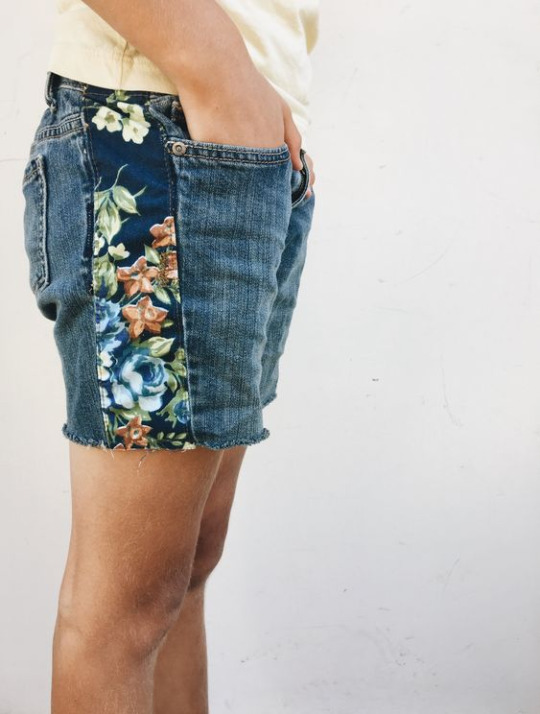
(Image source)
You don't need to resize the entire garment if you don't want to. For example, One Brown Mom turned this ankle-length skirt with a too small waistband into a well-fitting knee-length skirt by taking advantage of the skirt's flared shape.
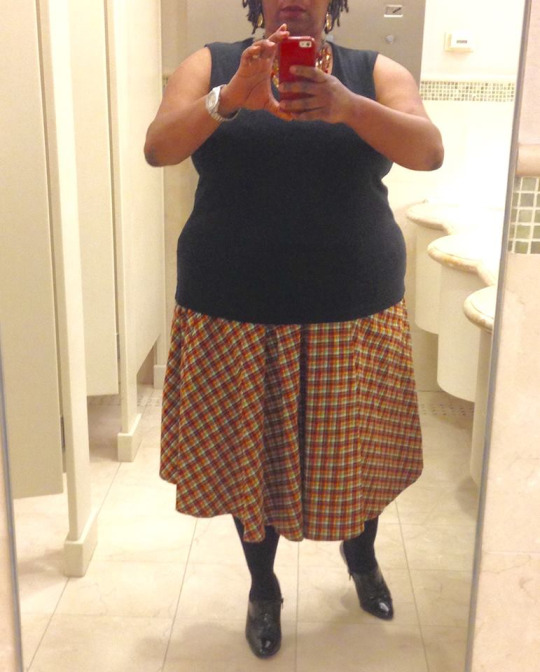
(Image source)
Conclusion:
Throughout our lives, our weight will fluctuate and our bodies will change. There's no shame in this: it's just a fact of life. Therefore, knowing how to upsize an item that is too small for you is a useful skill to learn.
If you want more inspiration, check out these projects by Confessions of a Refashionista, One Brown Mom, and Thriftanista in the City.
48K notes
·
View notes
Text

Tom Waits photographed by Frank W. Ockenfels III, 1992
617 notes
·
View notes
Text
obsessed with the woman at the dmv who replied with a firm “no” when asked if she wanted to be an organ donor but when the clerk asked “do you want junk mail? we sell your name and address to companies” she paused and gave a very thoughtful yet decisive “…yeah”
121K notes
·
View notes




